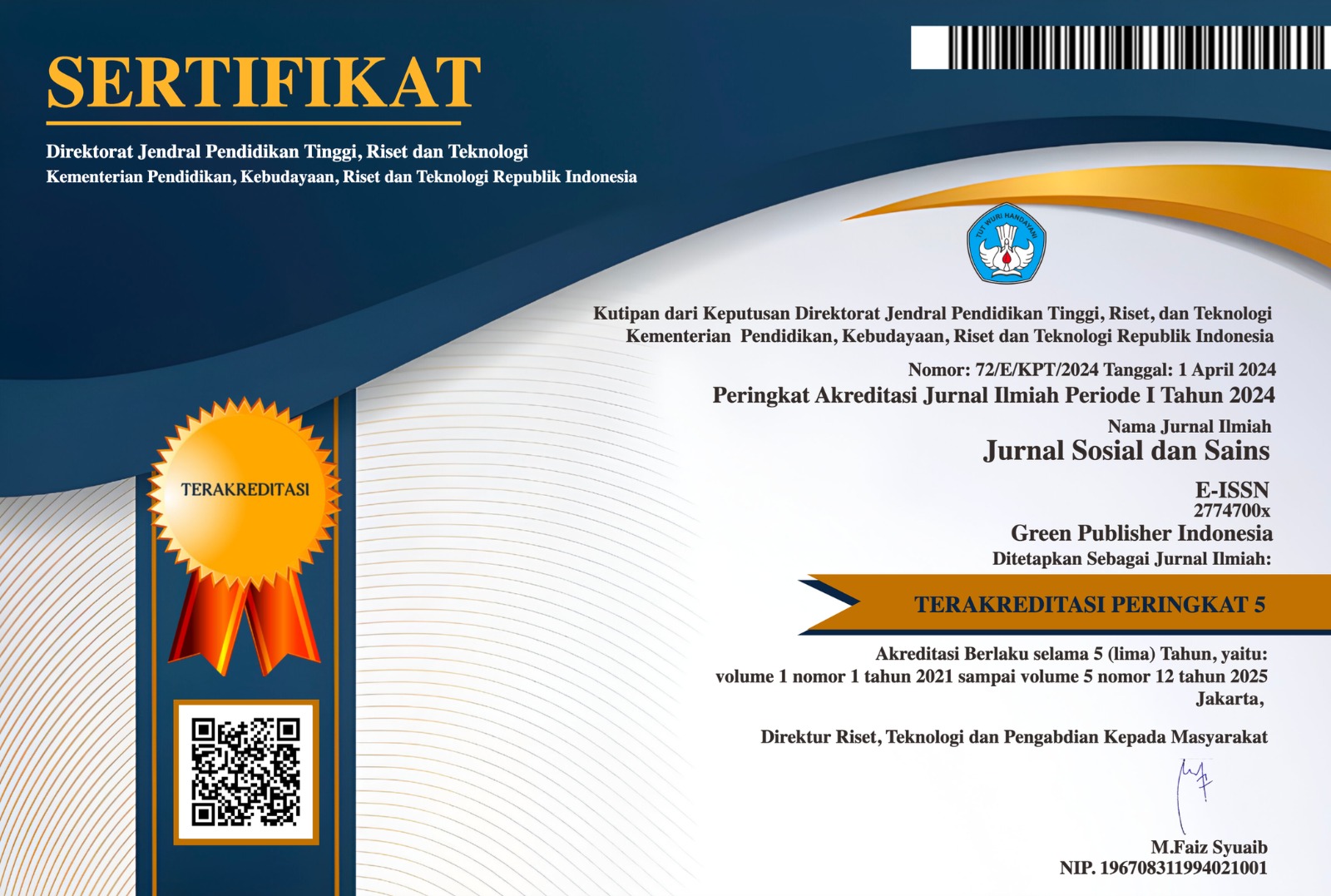Improving the Self-Assessment Tools for Training in Speaking to Grade Seven Students of Junior High School
DOI:
https://doi.org/10.59188/jurnalsosains.v2i3.366Keywords:
Self-assessment Tool, Speaking CompetencyAbstract
The main purpose of this study was to improve a self-assessment tool for speaking competency of the seven grade students of junior high school. The focus of this study was specifically on; 1) finding out the types of self-assessment needed to be improved; 2) Improving the prototype of a self-assessment tool; and 3) examining the quality of the improved self-assessment tools. This study used R&D method of Gall & Borg (2003) as design model. The subjects of this study were six English teachers and a syllabus for the seven grade students of junior high school. The data were obtained through questionnaire, interview, observation and syllabus analysis. The results revealed that there were two form of self-assessment tools needed to be developed, namely linguistic aspect and non-linguistic aspect self-assessment. The prototype of self-assessment tools were improved by considering the need analysis results and grand theory. The tools were validated and revised by two expert judges and user judges. Based on the validation from expert judges and user judges, the quality of the improved self-assessment tools was categorized as excellent instruments with very high validity.
Published
How to Cite
Issue
Section
License
Copyright (c) 2022 F.Simatupang F.Simatupang, Y.Salamanang, A.Tampubolon, F.Sianipar, N.Sinaga

This work is licensed under a Creative Commons Attribution-ShareAlike 4.0 International License.
Authors who publish with this journal agree to the following terms:
- Authors retain copyright and grant the journal right of first publication with the work simultaneously licensed under a Creative Commons Attribution-ShareAlike 4.0 International (CC-BY-SA). that allows others to share the work with an acknowledgement of the work's authorship and initial publication in this journal.
- Authors are able to enter into separate, additional contractual arrangements for the non-exclusive distribution of the journal's published version of the work (e.g., post it to an institutional repository or publish it in a book), with an acknowledgement of its initial publication in this journal.
- Authors are permitted and encouraged to post their work online (e.g., in institutional repositories or on their website) prior to and during the submission process, as it can lead to productive exchanges, as well as earlier and greater citation of published work.








